Automated License Plate Recognition (ALPR) cameras are transforming vehicle surveillance and management. By combining high-resolution imaging, optical character recognition (OCR), and machine learning algorithms, ALPR cameras can accurately detect and read license plates. These advanced systems are crucial in various applications, including law enforcement, parking management, toll collection, and traffic monitoring. The integration of cutting-edge technologies ensures precise performance in diverse environments, making ALPR cameras an indispensable tool for modern security and operational efficiency. This blog delves into the technical workings of ALPR cameras, highlighting the innovations that drive their effectiveness.
Vadzo's Armor-821CRS-FPD3 and Innova-662CRS are the best companions for Automated License Plate Recognition (ALPR) systems.
The Core Technology Behind ALPR Cameras
ALPR cameras use high-resolution imaging, OCR, and machine learning algorithms to detect and read license plates. Key components include:
High-Resolution Camera Sensors: Capture clear images even at high speeds and in varying light conditions. Modern ALPR cameras use CMOS sensors with HDR for low light and glare.
Infrared Illumination: Ensures consistent image quality at night by capturing detailed images without visible light interference.
Optical Character Recognition (OCR): Processes images to extract alphanumeric characters, recognizing various fonts, sizes, and plate designs.
Machine Learning Algorithms: Enhance accuracy by adapting to new plate designs and improving over time through training on large datasets.
For a high-quality imaging solution that enhances the capabilities of ALPR systems, consider our Armor-821CRS-FPD3 & Innova-662CRS. Its superior resolution and HDR capabilities can significantly improve image clarity, especially in varying light conditions.
Technical Advancements in ALPR Cameras
Enhanced Image Processing Algorithms
Recent advancements in image processing algorithms have significantly improved the accuracy and speed of ALPR systems. Techniques such as deep learning and neural networks are employed to enhance the OCR process, allowing the system to learn from a vast dataset of license plate images and adapt to new plate designs and styles.
AI and Machine Learning Integration
Artificial Intelligence (AI) and Machine Learning (ML) are revolutionizing ALPR technology. By integrating AI and ML, ALPR cameras can continuously improve their recognition capabilities. These technologies enable the system to handle complex scenarios, such as recognizing plates from different countries, dealing with partial occlusions, and interpreting damaged or dirty plates.
Cloud-Based ALPR Solutions
The advent of cloud technology has introduced significant improvements in ALPR systems. Cloud-based ALPR solutions offer centralized data management, scalability, and real-time data access. These systems can integrate with other security infrastructures, providing a comprehensive and unified approach to vehicle monitoring and management.
Edge Computing
Edge computing in ALPR cameras allows data processing to occur locally on the device rather than relying solely on cloud servers. This reduces latency, enhances data security, and enables real-time decision-making. Edge computing is particularly beneficial in scenarios requiring immediate action, such as law enforcement or security alerts.
Applications of ALPR Cameras in Smart City Solutions

Law Enforcement
ALPR cameras are indispensable tools in law enforcement due to their ability to automate the identification and tracking of vehicles. They enhance crime prevention, traffic management, and stolen vehicle recovery efforts.
Vehicle Tracking: These cameras continuously scan license plates and cross-reference them with databases of stolen or wanted vehicles. By using high-resolution sensors and real-time data processing, law enforcement agencies can receive instant alerts when a match is found, enabling rapid response.
Traffic Enforcement: ALPR cameras are deployed at intersections and highways to monitor traffic violations such as speeding, running red lights, and illegal turns. The cameras capture high-resolution images of the license plates, and advanced OCR software processes these images to identify offending vehicles. The integration of radar or lidar sensors can enhance the detection of speeding violations.
Public Safety: In sensitive areas such as government buildings, schools, and public events, ALPR cameras enhance security by monitoring and recording vehicles entering and exiting these zones. The real-time data is analyzed to detect any suspicious or unauthorized vehicles, improving situational awareness and response capabilities.

Parking Management
ALPR cameras streamline parking management by automating vehicle entry, exit, and fee collection. They enhance efficiency, reduce congestion, and improve security in parking facilities.
Automated Entry and Exit: By recognizing license plates, ALPR cameras allow for the seamless entry and exit of vehicles in parking facilities. This automation eliminates the need for physical tickets or access cards, speeding up the process and reducing wait times.
Parking Enforcement: These cameras automatically identify vehicles parked in restricted areas or overstaying their allocated time. High-resolution imaging and OCR enable precise recognition, facilitating efficient enforcement actions.
Efficient Space Utilization: ALPR systems track vehicle movements and occupancy in real-time, providing data on available spaces and improving overall parking management. This information can be used to direct vehicles to vacant spots, enhancing user convenience and optimizing space utilization.

Toll Collection
ALPR cameras automate toll collection by identifying vehicle license plates accurately. They enable seamless, cashless transactions, reduce traffic congestion, and enhance operational efficiency.
Automating Toll Payments: By recognizing license plates and linking them to pre-registered payment accounts, ALPR cameras facilitate automatic toll payments. This eliminates the need for manual transactions, reducing delays and enhancing throughput.
Reducing Congestion: At toll booths, ALPR cameras minimize congestion by allowing vehicles to pass through without stopping for manual payment. High-speed cameras capture license plate images, and OCR software processes them instantaneously to verify payment, thus maintaining traffic flow and reducing bottlenecks.
Our Best Cameras for ALPR Systems
Business Case for ALPR Camera Adoption
The integration of ALPR cameras into business operations offers significant advantages in efficiency, security, and data management. The ability of ALPR systems to provide real-time insights and actionable data enhances decision-making and improves overall operational effectiveness. Additionally, the continuous advancements in ALPR technology, such as AI integration and cloud-based solutions, present opportunities for businesses to stay ahead in a competitive landscape. Embracing ALPR technology not only enhances business performance but also contributes to a safer and more secure environment.


